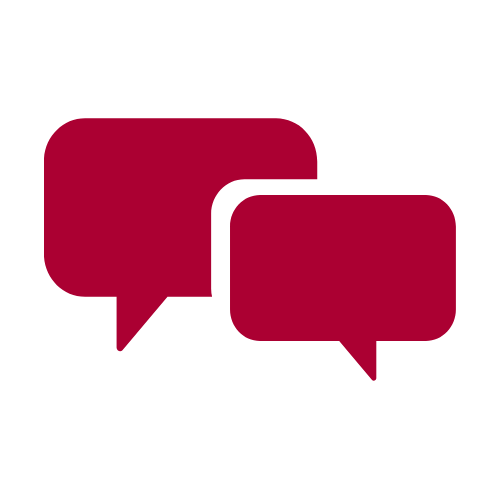

Created by Anthony Tardiff, used with permission
We live in the Information Age. Information is all around us, in every form imaginable. When we think of information, we usually think of dry, fact-laden articles, but information comes in many packages. Instagram posts, Reddit rants, YouTube videos, texts from your friends, dank memes, and this web page are all forms of information, too.
We create information all the time. That text I sent a friend arguing with three irrefutable points that pineapple doesn't belong on pizza is a piece of information. So is the scholarly article I had published this past year. And so was the conversation I had with my four-year-old in which he informed me that the Sky Gods could make a duck fall on my head. (I have no idea what prompted that declaration, and I'm scared to ask.)
Not all information is created equal. Some information is true. Some is mistaken. Some is made for entertainment rather than for taking seriously. Some is flat-out malicious. It's important to spot when information is bad, because bad information can have bad consequences.
You’ve heard of the fake news epidemic, in which made-up news pieces from satire websites, partisan sites, or simply malicious sites are widely clicked, believed, and shared. You might also have heard of some of these incidents:
 A guy walks into a pizza parlor and fires three shots, then goes looking for the hidden rooms that a complex internet conspiracy theory claimed were there, hiding abducted and abused children. Forty minutes later he surrenders to police, having found nothing.
A guy walks into a pizza parlor and fires three shots, then goes looking for the hidden rooms that a complex internet conspiracy theory claimed were there, hiding abducted and abused children. Forty minutes later he surrenders to police, having found nothing.
 A young political leader gets hold of a Russian forged book called The Protocols of the Elders of Zion, and writes that it “disclose[s], with an almost terrifying precision, the mentality and methods of action characteristic of the Jewish people and these writings expound in all their various directions the final aims towards which the Jews are striving. . . . the Jewish peril will be stamped out the moment the general public come into possession of that book and understand it.” The young man’s name is Adolf Hitler.
A young political leader gets hold of a Russian forged book called The Protocols of the Elders of Zion, and writes that it “disclose[s], with an almost terrifying precision, the mentality and methods of action characteristic of the Jewish people and these writings expound in all their various directions the final aims towards which the Jews are striving. . . . the Jewish peril will be stamped out the moment the general public come into possession of that book and understand it.” The young man’s name is Adolf Hitler.
These are extreme examples of the harmful power of bad information. Of course, you probably don’t fall for fake news . . . or fake memes . . . or fake science . . . right?
Quick question: How many animals did Moses take onto the ark?
Answer: None, actually. That was Noah.
Too easy? A plane crashes on the border of the U.S. and Canada. Where do they bury the survivors?
Answer: Nowhere, I hope, given that they're survivors.
You find a coin stamped with the date 29 B.C. How much is it worth now?
Answer: Nothing; it's a fake.
 Here’s the thing: your brain looks for stories and patterns, and it takes shortcuts. The raw data of facts are filtered, matched, and organized into our pre-existing knowledge, ideas, and narratives. This is how we make sense of the world, and it works really well . . . but it also leaves us open to error. So don’t assume that, without any conscious effort, you can spot bad information just by virtue of your own intelligence. Your brain can be fooled without you even knowing it.
Here’s the thing: your brain looks for stories and patterns, and it takes shortcuts. The raw data of facts are filtered, matched, and organized into our pre-existing knowledge, ideas, and narratives. This is how we make sense of the world, and it works really well . . . but it also leaves us open to error. So don’t assume that, without any conscious effort, you can spot bad information just by virtue of your own intelligence. Your brain can be fooled without you even knowing it.
It gets even worse when we take personal beliefs into account. When we have a personal stake in something, we are far more likely to favor information that agrees with us, and be suspicious about information that contradicts us. Nowhere is this more evident than in the political divide that plagues our country. Polled in 2013, 72% of Democrats believed President Bush “intentionally misled the public about weapons of mass destruction to promote the Iraq War,” while 58% of Republicans believed that global warming was a hoax, and 20% believed that Obama was the Anti-Christ. Often, knowing that information comes from or favors the other side is enough for us to disbelieve it outright, while information that comes from or favors our own side is accepted without much critical thinking.
Given that our brain and beliefs regularly influence how we see information, what can we do to make sure we're only using good information?
The key to not being a sucker is to be conscious of where your information comes from, and self-conscious about how we're viewing it. Librarians call this skill "information literacy," and we believe it's not just an academic skill, but a life skill.
It helps to have a CCOW.
CCOW stands for Credentials, Claims, Objectives, and Worldview. If you want to know if a piece of information is good, investigating these four elements can be very helpful.
If you have any questions, contact one of your friendly librarians.
